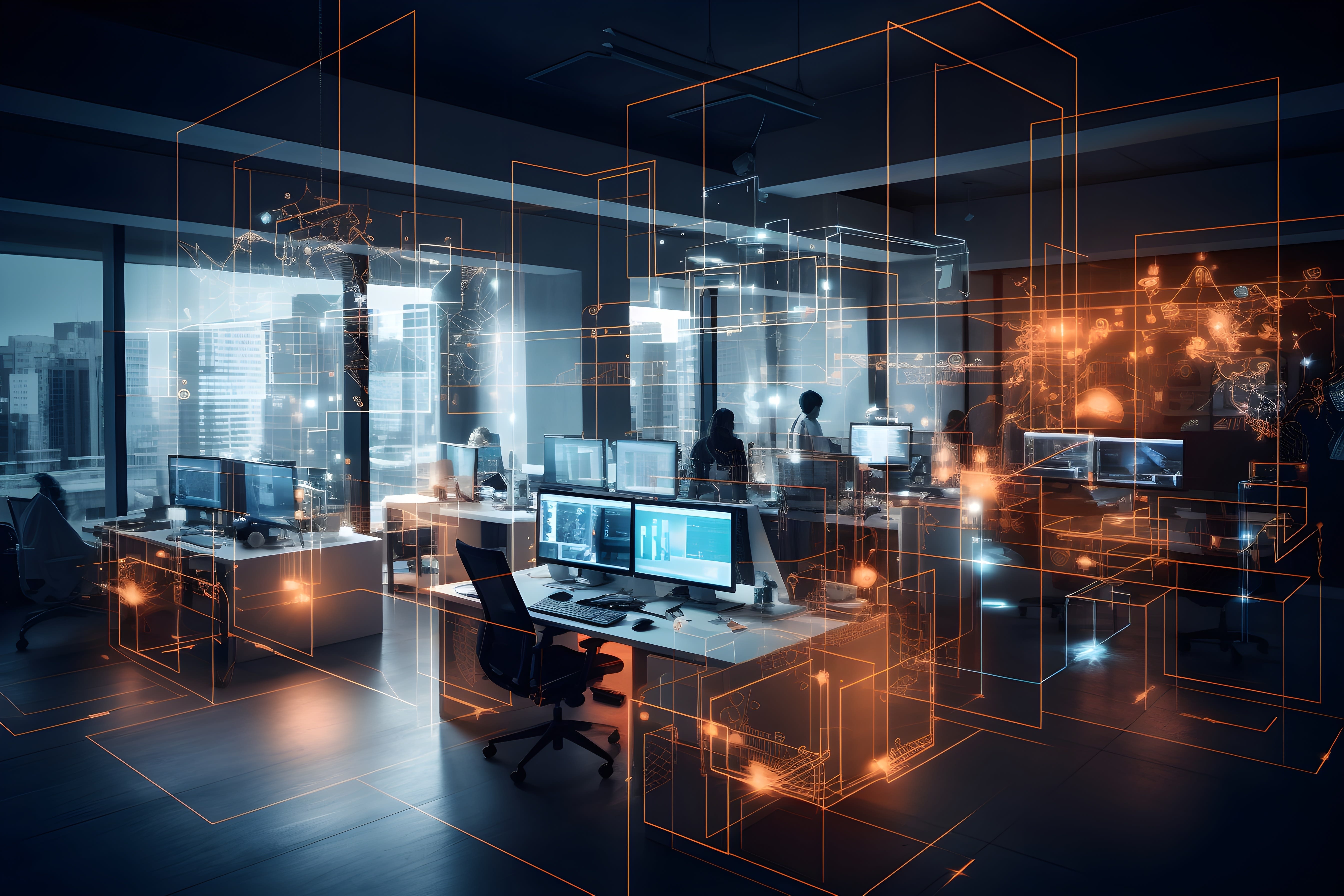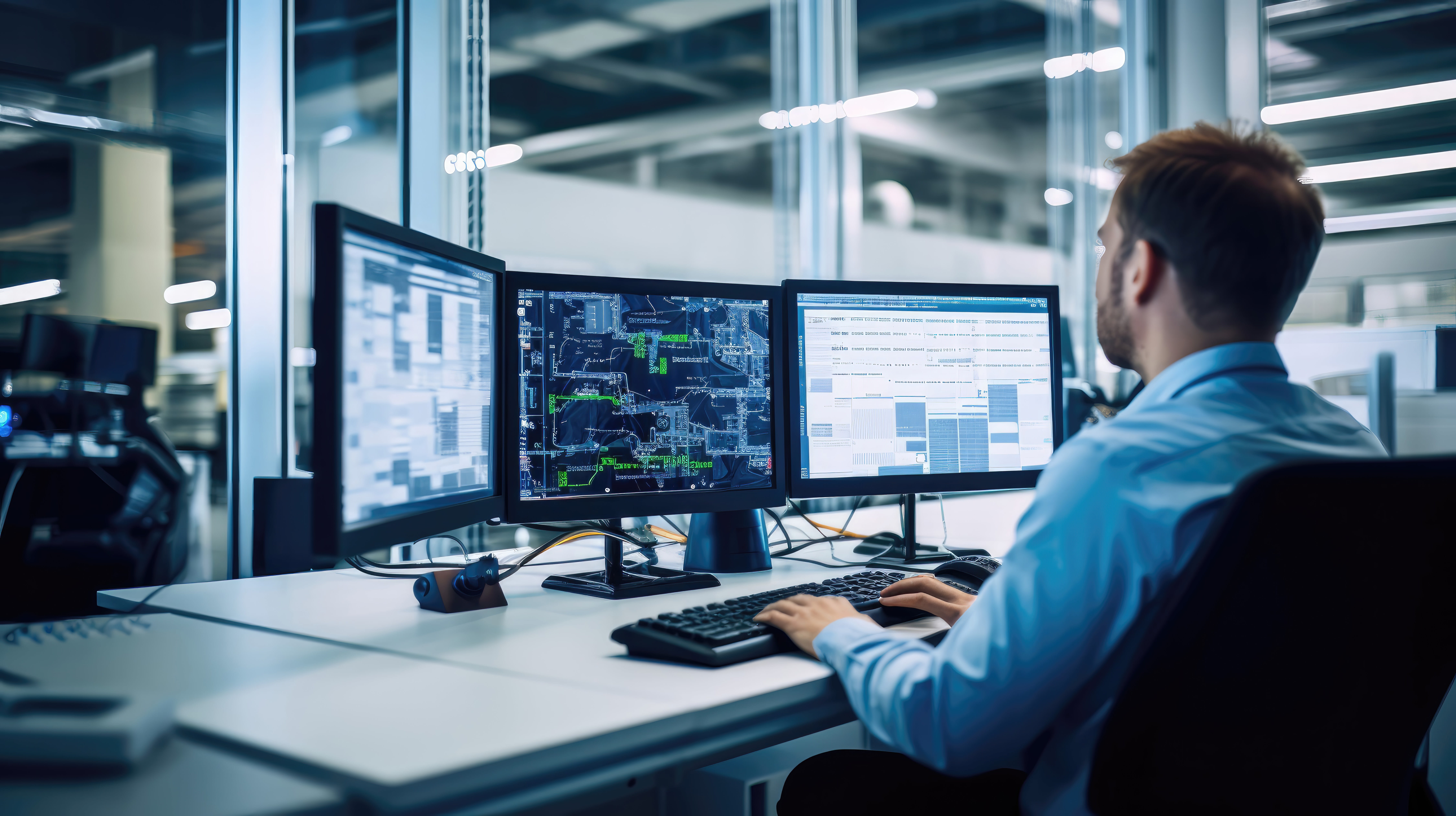Ungeahnte Möglichkeiten dank KI: Steigern Sie die Kreativität und Produktivität in der AEC-Branche

The architecture, engineering, and construction (AEC) industry is on the cusp of a technological revolution, with artificial intelligence (AI) as its primary driver. When we consider the benefits of AI for industry professionals, we see two main ways in which AI will impact future outcomes: AI as a catalyst for creativity and AI as an engine for productivity.
Professionals who learn to use AI technologies for any of these goals will have an advantage over those who don't use AI. We expect these tech-savvy pros to soon gain a competitive edge over their competition. They will be able to think more outside the box and bring robust projects to life faster. Let's take a look at what people think about AI and what they think is needed to stay ahead of technological developments.
The environment: Fear of humans being replaced by AI
In fields like design and architecture, creativity is the key point that differentiates a professional or company from others. Many people fear that AI will one day replace human creativity. A popular meme on the internet sums up this collective fear like this:
"You know what the biggest problem is with all the pressure being placed on AI? It's the wrong focus. I want AI to do my laundry and dishes so I can focus on art and writing, but I don't want AI to do my creative work while I do the laundry and dishes."
Joanna Maciejewska, Author
Unfortunately, laundry and dishes are still a problem. But anyone who has ever used Chat GPT will tell you that they have received huge amounts of information. Sorting through this data and creating something truly unique from it requires human ingenuity - at least for now.
The fear that AI will take certain jobs away from humans is not unfounded. History shows that technological progress has often caused disruptions in the current labor market. At the same time, however, it also offers opportunities for all who can use such new technologies.

The positive side: AI as inspiration
However, AI also has considerable potential to create new jobs and promote new skills. It can free people from monotonous tasks and allow them to focus on aspects of their work that require creativity, emotional intelligence and strategic thinking - qualities that AI cannot reproduce. For architects and engineers, this means they gain more time for innovation in the design process, maintaining customer relationships and complex problem solving.
And AEC companies are embracing the AI trend. The RIBA Artificial Intelligence Report 2024 confirms that AI is being put into practice in 41% of all cases. This suggests that companies are at least occasionally using AI for project purposes.
Companies that provide technologies to the AEC industry, like Trimble SketchUp, are working hard to create opportunities for their customers in the rapidly changing technology landscape.
"We believe that AI can help our customers achieve optimal results more often, increase their productivity and enrich their creativity. These benefits give them more time to focus on what matters most - developing innovative designs or acquiring new projects to further grow a successful business."
Chris Cronin, Vice President, Trimble Architecture & Design and Education
Unleashing creativity with AI
By harnessing artificial intelligence, professionals can discover new possibilities, streamline the creative process, and bring innovative ideas to life in an efficient and precise way. Now, let's explore how AI boosts creativity using examples from two creative companies, SketchUp and Adobe.
Diffusion allows you to use AI in SketchUp to create rendered images in seconds.
AI image creation from 3D models
Diffusion [LABS ] lets you harness the transformative power of AI in SketchUp to create rendered images in seconds. Diffusion brings easy-to-use, generative AI to SketchUp, giving you new ways to quickly generate images that inspire your creative process and support your design narrative. While Diffusion doesn't have a creative vision of its own, it helps you focus on your own.
Intelligent editing in Photoshop
Adobe Sensei makes complex photo editing tasks, such as selecting and masking people, refining hair details, and switching between different sky views, easier by automating these processes with a single click of your mouse. This allows artists and designers to focus on creative tasks rather than tedious, routine tasks.
Increasing productivity through AI
Deadlines, budgets and resource constraints are constant challenges for the AEC industry. But this is where AI comes in as a game-changer because it increases productivity across the entire project lifecycle. From preview analytics for project management to automated quality checks, AI-driven processes optimize operations, avoid errors and save time.
“Around 40% of all design development tasks can be automated using AI.”
Some ways to increase productivity through AI:
Automation of recurring tasks
AI can automate repetitive and routine tasks, allowing employees to focus on more complex, higher-value activities. For example, AI-powered data processing and analysis can significantly reduce the time spent on manual data processing.
Improved decision making
AI systems can quickly and accurately analyze massive amounts of data and derive insights that support informed decision-making. Some technology companies have already automated key data analytics tasks such as zoning studies, cost estimations, energy benchmarking, and climate analysis. This can lead to improved project planning, resource allocation, and overall construction management efficiency.
Increased accuracy
AI reduces the likelihood of human error in data entry, analysis, and other processes, ensuring greater accuracy and reliability of information—and this is critical in industries such as construction, agriculture, and geosciences.
Predictive maintenance
AI can predict equipment failures and maintenance requirements, reducing downtime and extending machine life. This proactive maintenance approach ensures that equipment is always ready and functioning when it is needed.
Optimal resource utilization
AI helps you optimize resources such as materials, labor, and time. AI-supported project management tools, for example, can plan tasks efficiently and thereby ensure the optimal use of all resources.
Data-driven insights
Artificial intelligence can analyze trends and patterns in data to derive actionable insights and help companies adapt their strategies and operations based on current data in real time.
With Scan-to-Design, you can scan rooms, design models, and collaborate with teams – all in a single app.
In SketchUp, AI increases productivity through features like automated 3D model organization and advanced search capabilities. This is evident in SketchUp's Scan-to-Design [Labs] , which lets you scan spaces, design models, and collaborate with teams°—all in a single app. Architects and designers can scan existing interiors, and SketchUp then transforms the scanned data into intelligently organized 3D geometries. In particular, it recognizes and marks objects such as walls, windows, furniture, and more.
AI is also doing valuable work in SkechUp's popular 3D Warehouse model library . With AI-powered image search, employees can quickly find the perfect model from millions of ready-made options. This helps speed up workflows in the design process.
See for yourself the improvements coming to AI model discovery in SketchUp Labs .
If you are interested in learning about SketchUp's many AI features and the ethics of using AI in this software, please visit this page .
For example, a product visualizer uses AI-powered image search to quickly create scenes.
Try this powerful, highly productive and easy-to-use AI with a free SketchUp trial .
Stand out from the competition
Understanding and implementing artificial intelligence can be challenging. It takes time to learn the technology and sort through the many and often over-hyped features to find the features that will truly provide you with rich, practical solutions to improve your products.
But those who use AI technology skillfully can significantly increase efficiency, increase accuracy and open up new design possibilities. By introducing AI, professionals can make a greater contribution to company growth and customer loyalty.